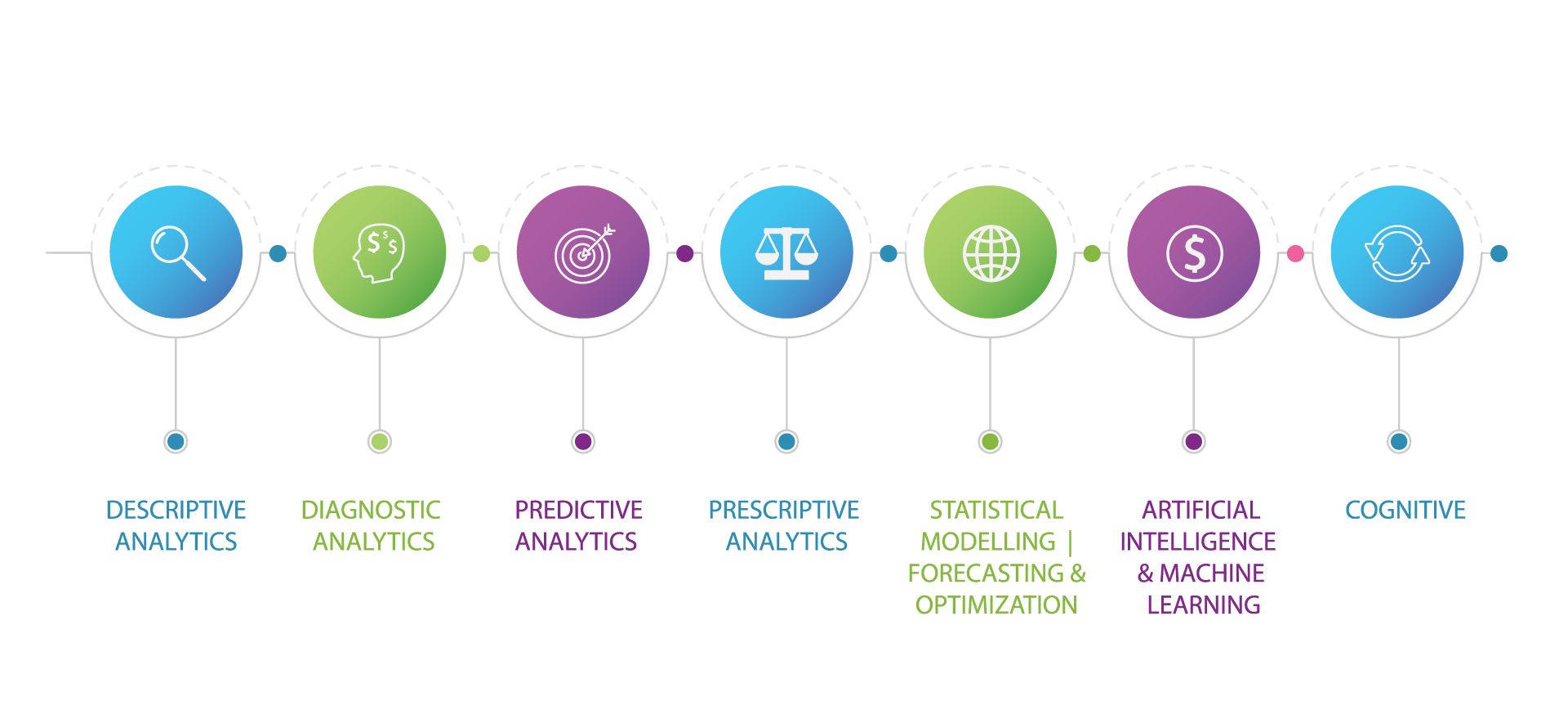

Open a Window to the Future
Use past data such as consumer purchase patterns, percentage changes or averages.
It could be applied to various departments such as production, inventory, finance, marketing and sales.
Tools Used – SPSS, SQL
Determine optimal actions that can trigger best outcomes Collect sales & marketing trends and data from CRM, ERP, HR and other systems to make predictions on consumer behaviour, supply chain, inventory and operations.
Predictive Analytics - What will happen next?
Predictive analytics is used to study what can happen in the future based on past trends & results, and helps predict the likelihood of a future outcome by using various statistical and machine learning algorithms.
Determine and deal future events in advance and seize future opportunities
Predictive analytics allows to forecast how behaviours will change and market shares will move under different packaging, messaging and pricing scenarios by linking the sales transactional information to attitudinal research findings to improve business performance.
Respond to challenges and take advantage of future trends
Prescriptive Analytics - Reduce ambiguity and gain better clarity
Prescriptive analytics uses simulation and optimization to suggest possible outcomes and result in actions to impact on the key business metrics.
Organizations use this field of analytics to get a list of probable outcomes to a new growth initiative by using historical data, big data and behavioural patterns.

